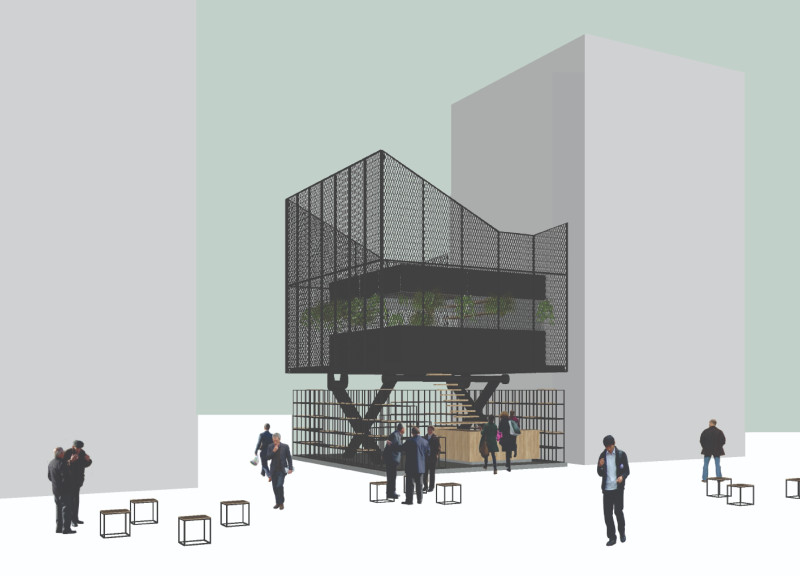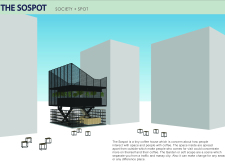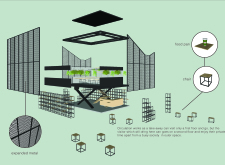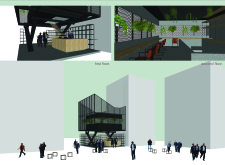5 key facts about this project
At its core, the project functions as a multifunctional space accommodating diverse activities such as community gatherings, educational programs, and artistic exhibitions. This versatility is central to the design, allowing the space to adapt to varying needs and serve as a catalyst for social interaction among users. The architectural layout facilitates seamless transitions between different areas, with open-plan zones encouraging collaboration while maintaining enough definition for distinct functionalities. The careful organization of spaces reflects a deep understanding of how people interact with their environment, addressing comfort and usability without compromising on visual appeal.
Key architectural elements contribute to the project’s unique identity. The façade, characterized by a balanced combination of innovative materials, showcases a contemporary aesthetic while ensuring energy efficiency. The use of materials such as glass, concrete, and sustainable timber allows for abundant natural light, which enhances the internal atmosphere. The glazing, strategically positioned, not only invites views of the surrounding landscape but also promotes passive solar heating, reducing reliance on artificial lighting and climate control. This integration of sustainable materials underscores the project’s commitment to environmentally responsible design practices.
The roofline is another distinctive feature, designed to serve both functional and aesthetic purposes. Incorporating green roofing techniques, it introduces a natural element into the urban fabric, supporting biodiversity while improving the building’s thermal performance. This choice reflects a growing trend in contemporary architecture that values the connection between buildings and nature, creating inviting spaces that foster well-being and ecological sensitivity.
Interior spaces have been crafted with meticulous attention to detail, balancing aesthetics with functionality. Common areas are designed as flexible environments, accommodating diverse activities while fostering community engagement. Natural materials are prevalent throughout, contributing to a sense of warmth and inviting users to connect with the space. The use of color and texture within these areas is carefully considered, promoting a cohesive experience that guides the user’s journey through the building.
Unique design approaches employed in this project include a focus on user experience and a sensitivity to the cultural context. By incorporating local cultural references into the design language, the building not only respects its environment but also enhances the urban identity. This respect for context extends to landscaping, where native plants are integrated into the outdoor areas, further blurring the lines between built and natural environments.
The architectural ideas underpinning this project exemplify a dedication to innovative design solutions that prioritize the quality of life for users. The building is more than a physical structure; it represents a commitment to community vitality and environmental stewardship, balancing modern needs with timeless architectural principles. The integration of technology and sustainable practices positions this project as a relevant case study in contemporary architectural discourse.
To gain further insights into this architectural design, readers are encouraged to explore elements such as architectural plans, architectural sections, and detailed architectural designs. These resources provide a valuable perspective on the thoughtful decisions made throughout the project and offer a deeper understanding of the ideas that shaped this unique architectural endeavor.


























